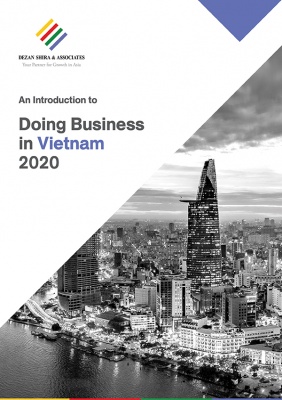
An Introduction to Doing Business in Vietnam 2020
Published: February 2020An Introduction to Doing Business in Vietnam 2020 will provide readers with an overview of the fundamentals of investing and conducting business in Vietnam. Vietnam’s growth has accelerated in recent years in part due to the US-China trade war. In addition to building the country’s export capacity through the private sector, the government has pursued strategies to join several free trade agreements. All these factors make Vietnam an attractive destination for business. We hope this business guide will provide investors with an insight into key aspects of undertaking and doing business in Vietnam.
This publication is currently unavailable. Please contact sales@asiabriefing.com for further information.
Vietnam follows an export-led growth model, as can be found in several emerging economies, combining trade liberalization and foreign direct investment promotion to spur exports. Vietnam’s growth has accelerated in recent years in part due to the US-China trade war, which kicked off in July 2018. As part of the fallout, Vietnam’s exports to the US rose by 28.8 percent year on year in the first quarter of 2019, making the US the largest importer of Vietnamese goods. A number of manufacturing businesses have also moved operations to Vietnam, including Foxconn, Samsung, and LG.
In addition to building the country’s export capacity through the private sector, the government has pursued strategies to join several free trade agreements. With the Comprehensive and Progressive Agreement for Trans-Pacific Partnership (CPTPP) in effect and the EU-Vietnam (EVFTA) expected to be ratified soon, Vietnam’s Ministry of Planning and Investment forecasts Vietnam’s GDP could increase by 1.35 percentage points by 2035 with the EVFTA boosting GDP by 15 percent. These trade deals along with already signed FTAs are likely to ensure that Vietnam remains competitive in the short-to medium term.
Vietnam has been enjoying strong growth since the 1990s despite crisis and uncertainties in the global market. Its government has also worked to improve business policies. Vietnam continues to prioritize infrastructure investment and does not shy away from looking at countries outside ASEAN to fuel its growth. The government has also invested in industrial zones and this investment is expected to further increase as foreign investment pours in. These reasons have made Vietnam one of the fastest growing economies in Asia maintaining a 7 percent Gross Domestic Product (GDP) in 2019. In addition, Vietnam’s labor force is a competitive advantage and is an important part of Vietnam’s future economic growth. Vietnam is known for its young, hardworking, literate and easy to train workforce.
All these factors make Vietnam an attractive destination for business, however challenges remain such as bureaucracy, language barriers, supply chain constraints, grey areas in regulations and infrastructure. We hope this business guide will provide investors with an insight into key aspects of undertaking and doing business in Vietnam and help you make an informed decision when beginning your operations in Vietnam.

